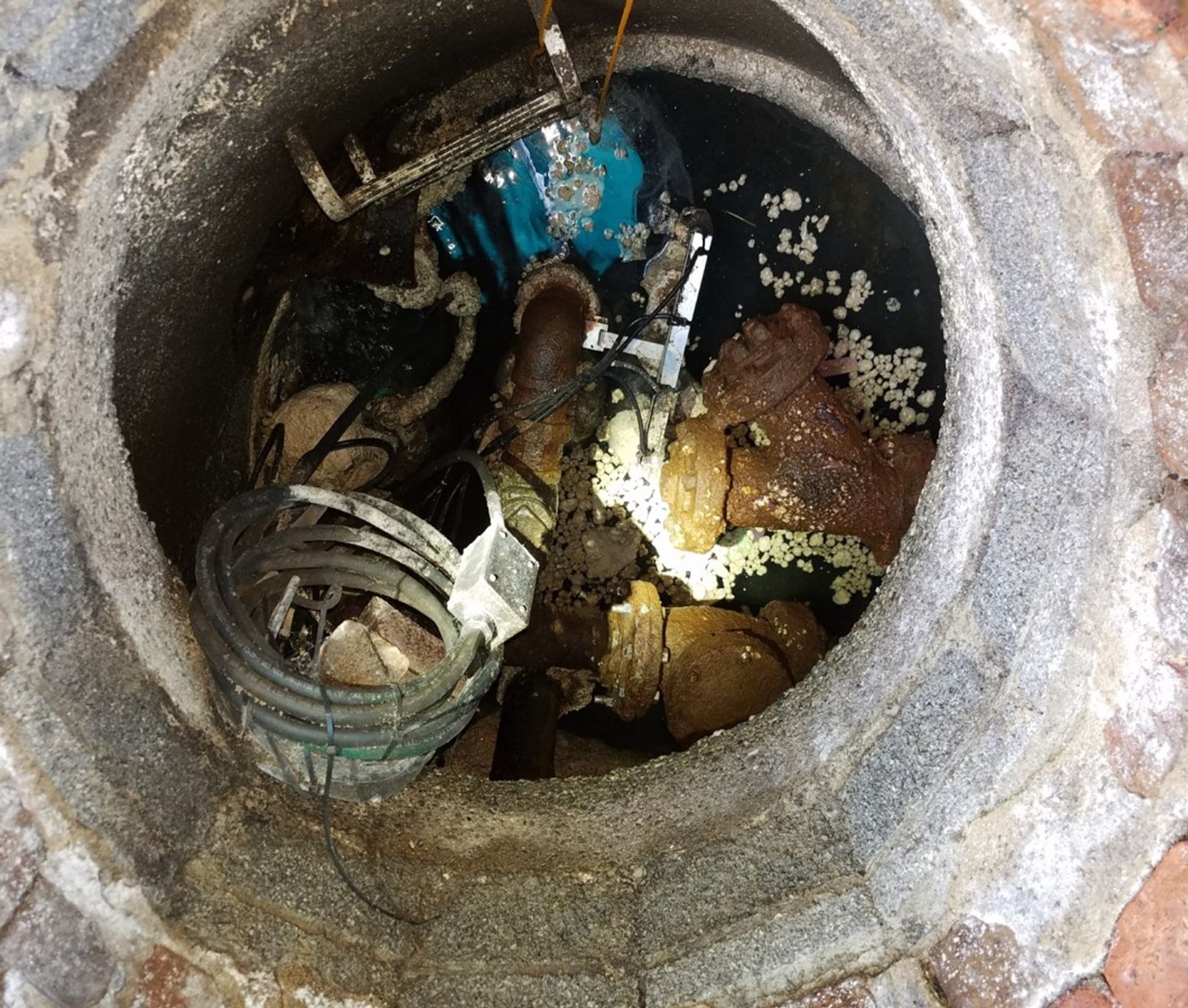
Restaurant Lift Station Trial Exhibits Successful FOG Reduction with EnviroZyme®
EnviroZyme® conducted a restaurant lift station trial in order to study FOG (fat, oil, and grease) reduction resulting from treatment with bacteria, specifically with our FOG Block product. The lift station in our trial—located outside the busiest restaurant in a tourist town—had been experiencing problems related to FOG loading from the restaurant’s wastes for the better part of the summer.
Lift stations pump wastewater from a lower point to a higher point when the elevation of a wastewater source is not sufficient for gravity flow, or when the use of gravity flow would be disadvantageous (often due to the high costs associated with excavation). Due to the heavy FOG content of the wastewater from the aforementioned nearby restaurant, this particular lift station held hundreds of pounds of grease. The surface area at the top of the lift station was almost entirely covered with grease balls, and the station had developed a problematic grease “crust.” In fact, the lift station had to be physically scraped out every other month in order to continue operating successfully.
At the beginning of our 8-week trial, a 5-pound FOG Block was suspended with a rope in the manhole of the lift station. Though the dissolution rate of these solid blocks varies with temperature, flow, and grease content of the environment in which they are placed, this particular product is designed to dissolve gradually over the course of 30 days in average conditions. Halfway through our trial, after the first block had dissolved over a period of 4 weeks, another 5-pound block was suspended in the manhole. In this way, billions of beneficial bacteria were continually and consistently delivered over the trial’s entire 2 months.

Fats, oils, and greases are triglycerides (also known as lipids), so called due to their chemical composition; each FOG molecule is comprised of a glycerol “head” and three fatty acid “tails.” These molecules attach to each other until something disrupts the process. Many common FOG treatments involve raising the temperature to “melt” or using solvents and surfactants to “dissolve” a group of attached triglycerides. Although these treatments are successful in breaking apart the group of molecules, the effects are temporary, because the molecules are free to reattach further downstream once the temperature returns to normal or the chemical wears off.
The enzyme lipase, on the other hand, breaks apart individual FOG molecules into their composing chemical parts, so that each of the three tails and the head of each molecule are all separated from one another. Once separated, there is no way for glycerol or fatty acids to attach themselves to other grease molecules, and it is in this separated state that the chemical components are digested by the very bacteria that produced the lipase. The specific Bacillus strains contained in all of EnviroZyme’s FOG Blocks (Slow and Rapid Release) are selected for the FOG-attacking enzymes they produce, particularly lipase.
This is why, after 2 weeks of treatment, when the first biological block had been halfway dissolved, the FOG balls present at the top of the restaurant’s lift station had already been reduced by about 50%, and there was, furthermore, no additional FOG crusting around the side walls.

At the end of the 8-week trial, despite continued FOG loading from the restaurant’s wastes during the busiest time of the season and without a single pump-out, the results were astounding. The grease balls had decreased substantially in both size and number, so that only about 15% of the surface area was covered. The crusting on the walls, which had been expected to double, did not accumulate further at all.

As evidenced by the photographs, the use of EnviroZyme’s FOG Block resulted in significant reduction in FOG, and the overall quality of the lift station’s condition was much improved, including a lower risk of blockages. Because the individual FOG molecules were broken down and digested by the bacteria, as opposed to temporary disbandment of the larger group of FOG molecules, the lowered risk of blockages extended to the entire wastewater system. The physical labor costs associated with manual cleanouts of the restaurant’s lift station decreased substantially, as did grease disposal costs.
Are you interested in achieving similar results for a lift station, interceptor, sewer, drain, sump, grease trap, reclamation system, or holding tank? Contact us by filling out the form below.

